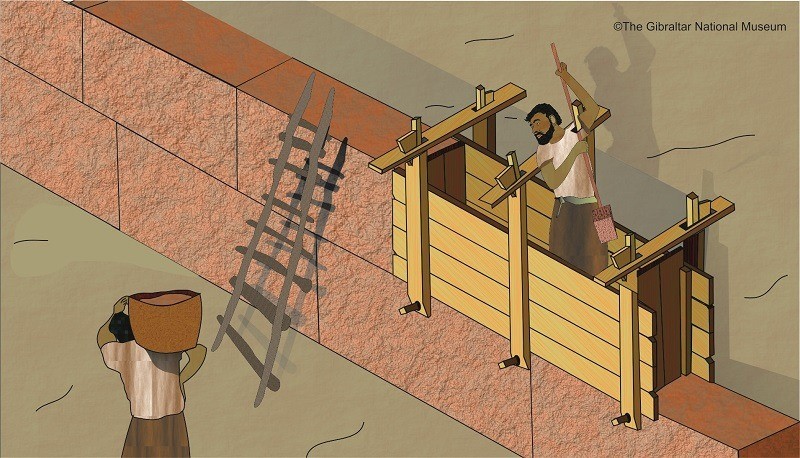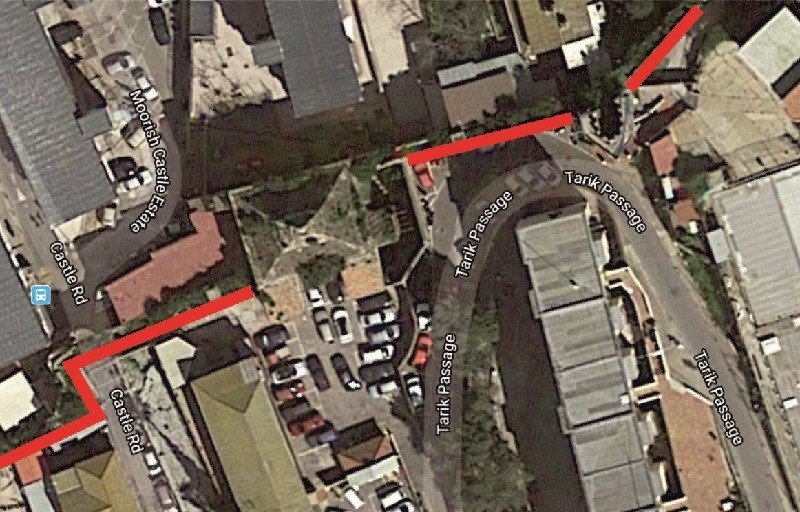Southern flank of the castle

Rammed earth technique or 'tapia'.

Walls with evidence of rammed earth construction (in red).
Southern flank of the castle
Within the ancient walled city of Gibraltar, the oldest elements are preserved in the southern flank of its medieval qasbah, having hardly been modified by the Spanish or the British. In this area we can see both a curious almond-shaped tower and a gate from the Nasrid period.
But today we will focus on a less conspicuous element, part of the actual wall and its method of construction. Much of this wall was built using the rammed earth technique or ‘tapia’. It is an ancient method and was widely used during the Islamic period, especially in the Almohad dynasty, but survived into the 20th century.
This kind of wall was made using earth and lime as a base. Gibraltar’s walls are characteristically strong, using clay, small limestone rocks, ceramic fragments and lime. They were formed from blocks built in wooden moulds, known as formworks, where the mixture would have been poured, moistened and compacted with a tamper. Once hardened, the timber formwork would be removed and work would commence on the next block. The formworks of the wall in Gibraltar measured 267 x 87cm. Subsequently the joining lines between the different blocks of rammed earth would have been pointed, resembling a wall built of large stone ashlars. Today we can see the wall with some repair patches carried out in later periods using masonry.
It is, without doubt, one of the oldest parts of Gibraltar’s defensive works. It could possibly date from the Almohad period (12th century), but we need to take into account that the ‘Calahorra’, or Tower of Homage, was made employing the same technique and materials but we know that was built by Abu al-Hasan’s workers in the 14th century, so future archaeological interventions should help clarify this question.
Rammed earth walls along the southern flank of the castle.
Published: April 18, 2020
Other similar VM - Archaeology
18-20 Bomb House Lane
PO Box 939,
Gibraltar
